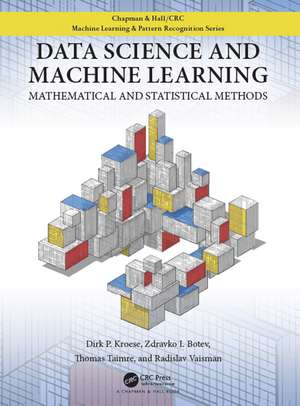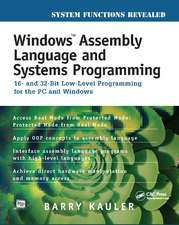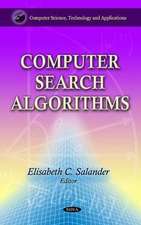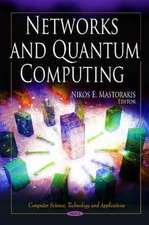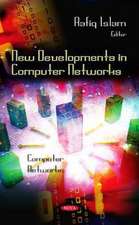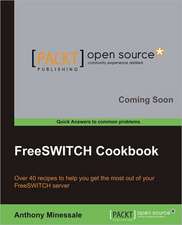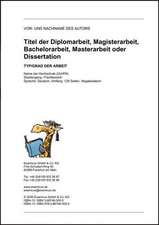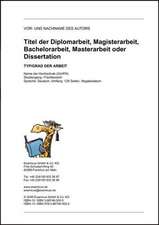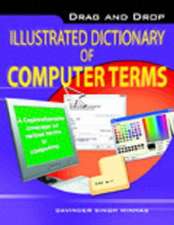Data Science and Machine Learning: Mathematical and Statistical Methods: Chapman & Hall/CRC Machine Learning & Pattern Recognition
Autor Dirk P. Kroese, Zdravko Botev, Thomas Taimre, Radislav Vaismanen Limba Engleză Hardback – 22 noi 2019
"This textbook is a well-rounded, rigorous, and informative work presenting the mathematics behind modern machine learning techniques. It hits all the right notes: the choice of topics is up-to-date and perfect for a course on data science for mathematics students at the advanced undergraduate or early graduate level. This book fills a sorely-needed gap in the existing literature by not sacrificing depth for breadth, presenting proofs of major theorems and subsequent derivations, as well as providing a copious amount of Python code. I only wish a book like this had been around when I first began my journey " -Nicholas Hoell, University of Toronto
"This is a well-written book that provides a deeper dive into data-scientific methods than many introductory texts. The writing is clear, and the text logically builds up regularization, classification, and decision trees. Compared to its probable competitors, it carves out a unique niche. -Adam Loy, Carleton College
The purpose of Data Science and Machine Learning: Mathematical and Statistical Methods is to provide an accessible, yet comprehensive textbook intended for students interested in gaining a better understanding of the mathematics and statistics that underpin the rich variety of ideas and machine learning algorithms in data science.
Key Features:
- Focuses on mathematical understanding.
- Presentation is self-contained, accessible, and comprehensive.
- Extensive list of exercises and worked-out examples.
- Many concrete algorithms with Python code.
- Full color throughout.
The Authors:
Dirk P. Kroese, PhD, is a Professor of Mathematics and Statistics at The University of Queensland. He has published over 120 articles and five books in a wide range of areas in mathematics, statistics, data science, machine learning, and Monte Carlo methods. He is a pioneer of the well-known Cross-Entropy method--an adaptive Monte Carlo technique, which is being used around the world to help solve difficult estimation and optimization problems in science, engineering, and finance.
Zdravko Botev, PhD, is an Australian Mathematical Science Institute Lecturer in Data Science and Machine Learning with an appointment at the University of New South Wales in Sydney, Australia. He is the recipient of the 2018 Christopher Heyde Medal of the Australian Academy of Science for distinguished research in the Mathematical Sciences.
Thomas Taimre, PhD, is a Senior Lecturer of Mathematics and Statistics at The University of Queensland. His research interests range from applied probability and Monte Carlo methods to applied physics and the remarkably universal self-mixing effect in lasers. He has published over 100 articles, holds a patent, and is the coauthor of Handbook of Monte Carlo Methods (Wiley).
Din seria Chapman & Hall/CRC Machine Learning & Pattern Recognition
-
 Preț: 313.05 lei
Preț: 313.05 lei - 20%
 Preț: 298.44 lei
Preț: 298.44 lei - 20%
 Preț: 495.84 lei
Preț: 495.84 lei -
 Preț: 353.69 lei
Preț: 353.69 lei -
 Preț: 357.34 lei
Preț: 357.34 lei - 20%
 Preț: 921.43 lei
Preț: 921.43 lei - 8%
 Preț: 410.54 lei
Preț: 410.54 lei - 31%
 Preț: 591.54 lei
Preț: 591.54 lei -
 Preț: 422.59 lei
Preț: 422.59 lei - 27%
 Preț: 263.50 lei
Preț: 263.50 lei - 18%
 Preț: 779.84 lei
Preț: 779.84 lei - 27%
 Preț: 259.81 lei
Preț: 259.81 lei - 43%
 Preț: 266.41 lei
Preț: 266.41 lei - 26%
 Preț: 272.02 lei
Preț: 272.02 lei - 15%
 Preț: 448.04 lei
Preț: 448.04 lei - 30%
 Preț: 264.66 lei
Preț: 264.66 lei - 15%
 Preț: 654.70 lei
Preț: 654.70 lei - 20%
 Preț: 672.78 lei
Preț: 672.78 lei - 20%
 Preț: 389.51 lei
Preț: 389.51 lei - 12%
 Preț: 299.89 lei
Preț: 299.89 lei - 30%
 Preț: 436.01 lei
Preț: 436.01 lei
Preț: 617.55 lei
Preț vechi: 678.63 lei
-9% Nou
118.24€ • 121.29$ • 99.55£
Carte disponibilă
Livrare economică 05-19 februarie
Livrare express 21-25 ianuarie pentru 73.73 lei
Specificații
ISBN-10: 1138492531
Pagini: 538
Dimensiuni: 210 x 280 x 35 mm
Greutate: 1.69 kg
Ediția:1
Editura: CRC Press
Colecția Chapman and Hall/CRC
Seria Chapman & Hall/CRC Machine Learning & Pattern Recognition
Public țintă
Undergraduate CoreCuprins
Notă biografică
Zdravko Botev, PhD, is an Australian Mathematical Science Institute Lecturer in Data Science and Machine Learning with an appointment at the University of New South Wales in Sydney, Australia. He is the recipient of the 2018 Christopher Heyde Medal of the Australian Academy of Science for distinguished research in the Mathematical Sciences.
Thomas Taimre, PhD, is a Senior Lecturer of Mathematics and Statistics at The University of Queensland.
His research interests range from applied probability and Monte Carlo methods to applied physics and the remarkably universal self-mixing effect in lasers. He has published over 100 articles, holds a patent, and is the coauthor of Handbook of Monte Carlo Methods (Wiley).
Radislav Vaisman, PhD, is a Lecturer of Mathematics and Statistics at The University of Queensland. His research interests lie at the intersection of applied probability, machine learning, and computer science. He has published over 20 articles and two books.
Recenzii
- Victor Moreno, ISCB News, December 2020
'The way the Python code was written follows the algorithm closely. This is very useful for readers who wish to understand the rationale and flow of the background knowledge. In each chapter, the authors recommend further readings for those who plan to learn advanced topics. Another useful part is that the Python implementation of different statistical learning algorithms is discussed throughout the book. At the end of each chapter, extensive exercises are designed. These exercises can help readers understand the content better. This book would be a good reference for readers who are already experienced with statistical analysis and are looking for theoretical background knowledge of the algorithms.'
-Yin-Ju Lai and Chuhsing Kate Hsiao, Biometrics, vol 77, issue 4, 2021
Descriere
"This textbook is a well-rounded, rigorous, and informative work presenting the mathematics behind modern machine learning techniques. It hits all the right notes: the choice of topics is up-to-date and perfect for a course on data science for mathematics students at the advanced undergraduate or early graduate level. This book fills a sorely-needed gap in the existing literature by not sacrificing depth for breadth, presenting proofs of major theorems and subsequent derivations, as well as providing a copious amount of Python code. I only wish a book like this had been around when I first began my journey " -Nicholas Hoell, University of Toronto
"This is a well-written book that provides a deeper dive into data-scientific methods than many introductory texts. The writing is clear, and the text logically builds up regularization, classification, and decision trees. Compared to its probable competitors, it carves out a unique niche. -Adam Loy, Carleton College
The purpose of Data Science and Machine Learning: Mathematical and Statistical Methods is to provide an accessible, yet comprehensive textbook intended for students interested in gaining a better understanding of the mathematics and statistics that underpin the rich variety of ideas and machine learning algorithms in data science.
Key Features:
- Focuses on mathematical understanding.
- Presentation is self-contained, accessible, and comprehensive.
- Extensive list of exercises and worked-out examples.
- Many concrete algorithms with Python code.
- Full color throughout.
The Authors:
Dirk P. Kroese, PhD, is a Professor of Mathematics and Statistics at The University of Queensland. He has published over 120 articles and five books in a wide range of areas in mathematics, statistics, data science, machine learning, and Monte Carlo methods. He is a pioneer of the well-known Cross-Entropy method--an adaptive Monte Carlo technique, which is being used around the world to help solve difficult estimation and optimization problems in science, engineering, and finance.
Zdravko Botev, PhD, is an Australian Mathematical Science Institute Lecturer in Data Science and Machine Learning with an appointment at the University of New South Wales in Sydney, Australia. He is the recipient of the 2018 Christopher Heyde Medal of the Australian Academy of Science for distinguished research in the Mathematical Sciences.
Thomas Taimre, PhD, is a Senior Lecturer of Mathematics and Statistics at The University of Queensland. His research interests range from applied probability and Monte Carlo methods to applied physics and the remarkably universal self-mixing effect in lasers. He has published over 100 articles, holds a patent, and is the coauthor of Handbook of Monte Carlo Methods (Wiley).
